Themed collection New catalytic materials for energy and chemistry in transition

New catalytic materials for energy and chemistry in transition
Guest editors Jiří Čejka, Petr Nachtigall and Gabriele Centi introduce the New catalytic materials for an energy and chemistry transition themed issue of Chemical Society Reviews.

Chem. Soc. Rev., 2018,47, 8066-8071
https://doi.org/10.1039/C8CS90119H
Advances in porous and nanoscale catalysts for viable biomass conversion
Solid catalysts with unique porosity and nanoscale properties play a promising role for efficient valorization of biomass into sustainable advanced fuels and chemicals.

Chem. Soc. Rev., 2019,48, 2366-2421
https://doi.org/10.1039/C8CS00452H
New trends in tailoring active sites in zeolite-based catalysts
This review discusses approaches for tailoring active sites in extra-large pore, nanocrystalline, and hierarchical zeolites and their performance in emerging catalytic applications.
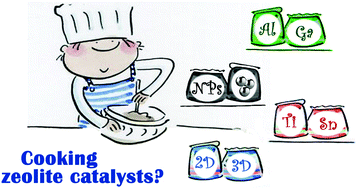
Chem. Soc. Rev., 2019,48, 1095-1149
https://doi.org/10.1039/C8CS00887F
Catalysis by hybrid sp2/sp3 nanodiamonds and their role in the design of advanced nanocarbon materials
Hybrid sp2/sp3 nanocarbons, in particular sp3-hybridized ultra-dispersed nanodiamonds and derivative materials, such as the sp3/sp2-hybridized bucky nanodiamonds and sp2-hybridized onion-like carbons, represent a rather interesting class of catalysts still under consideration.
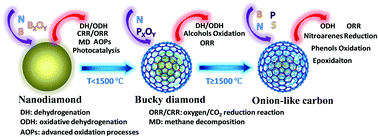
Chem. Soc. Rev., 2018,47, 8438-8473
https://doi.org/10.1039/C8CS00684A
Surface organometallic chemistry in heterogeneous catalysis
Surface organometallic chemistry has been reviewed with a special focus on environmentally relevant transformations (C–H activation, CO2 conversion, oxidation).

Chem. Soc. Rev., 2018,47, 8403-8437
https://doi.org/10.1039/C8CS00356D
Functionalised heterogeneous catalysts for sustainable biomass valorisation
Functionalised heterogeneous catalysts show great potentials for efficient valorisation of renewable biomass to value-added chemicals and high-energy density fuels.
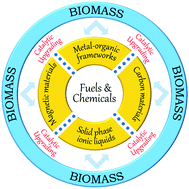
Chem. Soc. Rev., 2018,47, 8349-8402
https://doi.org/10.1039/C8CS00410B
Towards operando computational modeling in heterogeneous catalysis
An increased synergy between experimental and theoretical investigations in heterogeneous catalysis has become apparent during the last decade.
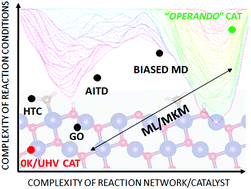
Chem. Soc. Rev., 2018,47, 8307-8348
https://doi.org/10.1039/C8CS00398J
From 3D to 2D zeolite catalytic materials
Research activities and recent developments in the area of three-dimensional zeolites and their two-dimensional analogues are reviewed.
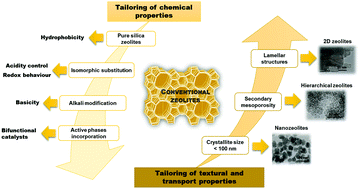
Chem. Soc. Rev., 2018,47, 8263-8306
https://doi.org/10.1039/C8CS00370J
Core–shell structured titanium dioxide nanomaterials for solar energy utilization
This review aims to provide a comprehensive overview of major advances in core–shell structured TiO2 nanomaterials for solar energy utilization.
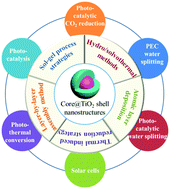
Chem. Soc. Rev., 2018,47, 8203-8237
https://doi.org/10.1039/C8CS00443A
Cu-CHA – a model system for applied selective redox catalysis
We review the structural chemistry and reactivity of copper-exchanged molecular sieves with chabazite (CHA) topology, as an industrially applied catalyst in ammonia mediated reduction of harmful nitrogen oxides (NH3-SCR) and as a general model system for red-ox active materials (also the recent results in the direct conversion of methane to methanol are considered).
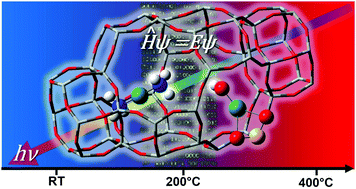
Chem. Soc. Rev., 2018,47, 8097-8133
https://doi.org/10.1039/C8CS00373D
Imaging photogenerated charge carriers on surfaces and interfaces of photocatalysts with surface photovoltage microscopy
Recent advances in imaging and characterizing charge separation on surfaces and interfaces of photocatalysts by surface photovoltage spectroscopy were reviewed and highlighted.
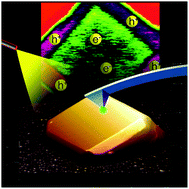
Chem. Soc. Rev., 2018,47, 8238-8262
https://doi.org/10.1039/C8CS00320C
Hollow nanoparticles as emerging electrocatalysts for renewable energy conversion reactions
Hollow structured nanocatalysts show a great potential as next generation electrocatalysts for future renewable and sustainable energy conversion technologies.
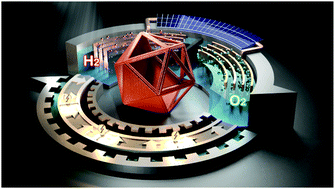
Chem. Soc. Rev., 2018,47, 8173-8202
https://doi.org/10.1039/C8CS00336J
Catalysis and photocatalysis by metal organic frameworks
This review aims to provide different strategies employed to use MOFs as solid catalysts and photocatalysts in organic transformations.
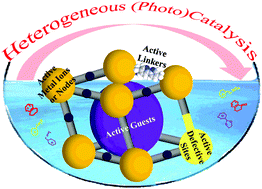
Chem. Soc. Rev., 2018,47, 8134-8172
https://doi.org/10.1039/C8CS00256H
Single-site and nano-confined photocatalysts designed in porous materials for environmental uses and solar fuels
This review presents the progress in the design of single-site and nano-confined photocatalysts in porous materials for environmental remediation and solar fuel production.
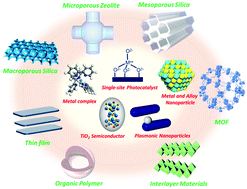
Chem. Soc. Rev., 2018,47, 8072-8096
https://doi.org/10.1039/C8CS00341F
Controlling the charge state of supported nanoparticles in catalysis: lessons from model systems
Model systems are very important to identify the working principles of real catalysts, and to develop concepts that can be used in the design of new catalytic materials.

Chem. Soc. Rev., 2018,47, 8474-8502
https://doi.org/10.1039/C8CS00152A
About this collection
We are delighted to present a Chemical Society Reviews themed collection on ‘New catalytic materials for energy and chemistry in transition”. This issue, guest edited by Jiří Čejka (Czech Academy of Science), Petr Nachtigall (Charles University in Prague) and Gabriele Centi (University of Messina), focuses on the impact of transition in energy and chemistry on catalysis. Driven from the large change in the objectives deriving from sustainability issues and in part from new tools of understanding or synthetizing catalysts, future catalysis will be largely different from that of just few years ago. For this reason, it is necessary to rethink catalysis science and technology, starting from a comprehensive state-of-the-art to look at new directions to move, and open problems and possibilities unlocked from new materials or way to synthetize catalysts, the combination between theoretical and in-situ methods to understand catalysis in operation, the use of new reactor types, etc. This special issue aims to bring together the most recognized researchers in this field to address their different perspectives and specific fields with the common questions: where we are and which gaps and possibilities we have to make to a step change towards the future of catalysis. This issue covers the most important aspects of the recent development of heterogeneous catalysis, highlighting critical goals in synthesis of different types of catalysts, their detailed characterization, theoretical description of properties of catalysts, and last but not least the real word of catalytic transformations.